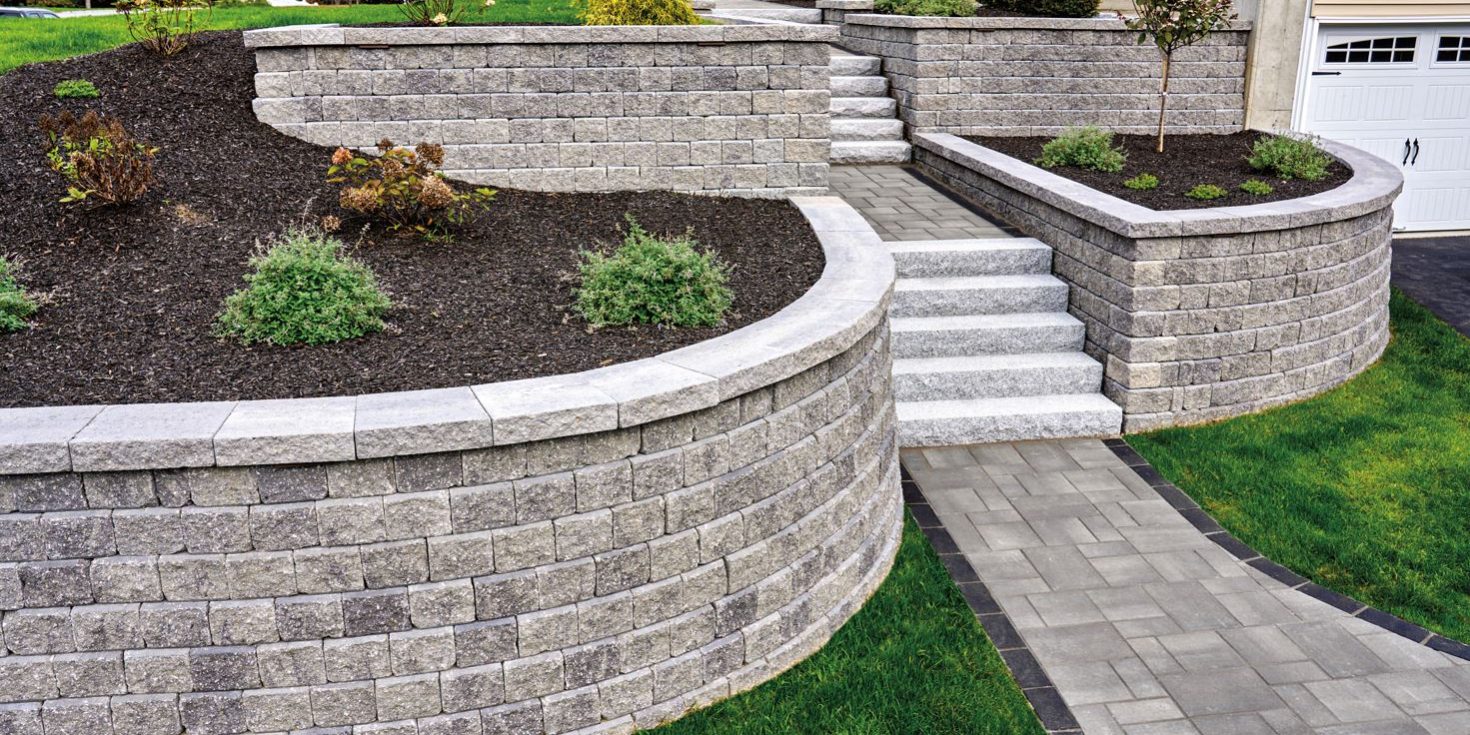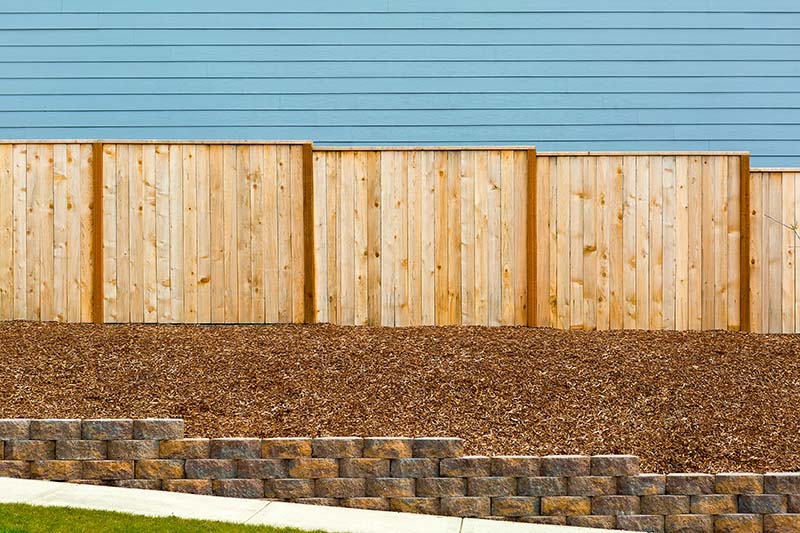Easy-to-follow guide to installing OKC Precision Retaining Walls on a slope
Trick Factors To Consider for Structure Efficient Retaining Walls in Your Lawn
When you're thinking about building a retaining wall surface in your lawn, it's important to think about numerous essential factors. The wall surface's function, the materials you'll use, and the details dirt conditions can all influence its efficiency and longevity. You'll likewise need to browse regional building ordinance and strategy for proper water drainage. How do you ensure your design not just meets these demands but likewise enhances your landscape? Allow's check out the important actions together.
Comprehending the Purpose of Your Retaining Wall
When you think of developing a maintaining wall, consider its primary function: maintaining dirt and stopping disintegration. Retaining walls provide important assistance for sloped landscapes, aiding to preserve dirt integrity. You'll find they're essential in areas where water drainage might otherwise get rid of dirt, bring about costly repair work and landscape damages.
By holding back planet, these walls develop degree surface areas for yards, patio areas, or pathways. This not only enhances your backyard's aesthetic appeals but additionally advertises far better drainage, reducing water merging in unwanted areas. If you're dealing with steep slopes, a well-constructed retaining wall can avoid landslides, making sure security for you and your home.
Inevitably, understanding the purpose of your retaining wall surface will certainly lead your layout choices and assist you produce a useful, long lasting structure that satisfies your needs. So, take a moment to evaluate your landscape; it'll pay off over time.
Selecting the Right Materials
When picking products for your retaining wall surface, you'll wish to take into consideration toughness, aesthetics, and price. Each aspect plays a necessary function in ensuring your wall stands the examination of time while looking wonderful and suitable your budget. Allow's check out just how to make the very best options for your project.
Product Toughness Elements
Picking the ideal materials is important for the long life and efficiency of your retaining wall, given that their toughness directly influences the wall's capability to endure ecological stress and anxieties. Start by considering your regional environment; materials like concrete and stone stand up to wetness and temperature changes well. If you stay in a location prone to heavy rainfalls, go with products with good drain residential or commercial properties, like crushed rock or permeable blocks, to avoid water buildup.
Some materials carry out much better in details dirt kinds, so it's crucial to match them accordingly. Selecting resilient materials assurances your retaining wall surface stands solid, protecting your backyard for years to come.
Aesthetic Design Choices
Sturdy products not only guarantee your retaining wall surface's architectural integrity but additionally play a crucial role in its aesthetic charm. Don't neglect regarding the wall's form-- rounded walls can create a softer look, while straight lines can feel more structured. By carefully picking materials that straighten with your aesthetic vision, you'll boost your outside room while ensuring your wall surface stands solid against the components.
Cost-Effectiveness Evaluation
Choosing the right products for your retaining wall isn't simply regarding appearances; it's likewise necessary for your budget plan. When picking materials, take into consideration both in advance prices and long-term durability. Concrete blocks could be pricier at first, yet their longevity can save you money on fixings. On the various other hand, timber can be a lot more inexpensive yet may require substitute faster.
Do not neglect to consider maintenance costs also (OKC Precision Retaining Walls). Some products, like natural stone, can add appeal and call for much less maintenance, while others might need routine therapies
Ultimately, evaluate the advantages and disadvantages of each option against your budget and the wall's intended objective. Investing sensibly in materials currently can stop costly concerns later on. Pick products that stabilize price and performance efficiently.
Assessing Dirt Conditions and Water Drainage
As you start your task, reviewing dirt problems and drain is vital for the success of your retaining wall. Start by examining the kind of dirt in your backyard. Sandy dirt drains pipes well however lacks stability, while clay dirt can maintain moisture, leading to pressure on your wall. Examine the dirt's moisture web content by excavating a small opening and observing how rapidly it dries out.
Following, evaluate the incline of your lawn. If water naturally streams toward your wall, you'll require to apply a drainage remedy to stop erosion and stress accumulation. Consider mounting perforated pipelines or gravel backfill behind the wall to facilitate water drainage.
Lastly, observe any kind of neighboring trees or plants; their origins can affect soil stability. By recognizing your soil conditions and applying correct drain, you'll create a solid structure for your retaining wall that stands the test of time.
Adhering To Local Building Regulations
Prior to you start constructing your retaining wall, you need to research study local regulations to guarantee compliance. It's important to comprehend what permits you must obtain, as this can conserve you from costly fines or having to remodel your work. Taking these steps seriously will assist you construct a secure and effective structure.
Research Study Local Regulations
Recognizing local laws is essential when planning your retaining wall surface task, especially because developing codes can vary considerably by place. Begin by getting in touch with your local structure department or community to discover about certain requirements. Seek standards on wall surface elevation, materials, water drainage systems, and architectural stability. Numerous areas have constraints on the sorts of products you can utilize and how high you can build. You'll additionally intend to take into account the zoning regulations that might impact your project. Ignoring these guidelines can result in costly penalties or the need to renovate your work. By doing your study upfront, you can ensure your retaining wall fulfills all needed codes and blends perfectly right into your lawn.
Acquire Essential Licenses
As soon as you have actually looked into regional policies, the following action is to obtain the necessary permits for your retaining wall surface project. This procedure guarantees your wall surface abides by structure codes and security requirements. Connect to your local building authority to discover what allows you need. They may call for particular strategies or design analyses, especially for larger walls. Be prepared to submit thorough drawings, including measurements and products. Do not forget to check if your job impacts water drainage or neighboring homes, as these variables might require extra licenses. Protecting the ideal authorizations can conserve you from costly fines or having to dismantle your wall later. Remember, following the guidelines now will cause a smoother building experience.

Preparation the Layout and Visual Appeal
As you commence intending the style and aesthetic appeals of your retaining wall, take into consideration exactly how it will certainly integrate with the surrounding landscape. Think concerning the materials you'll use-- rock, brick, or concrete-- and just how they'll enhance your home's design and the natural environments in your lawn. Choose shades and textures that mix perfectly with existing features like patio areas, pathways, or Get More Information yards.
Following, picture the wall surface's shape and height. Bent walls can soften a stiff landscape, while straight lines may share a much more modern look. Don't fail to remember to integrate plants and plant around the wall for an all-natural touch; this can enhance its allure and integrate it right into the environment.
Finally, keep in mind capability. Your design needs to not only be visually pleasing yet also offer its objective successfully. By thoughtfully preparing these components, you'll create a preserving wall that improves your backyard's beauty while fulfilling its architectural function.
Computing Height and Thickness Demands
To construct a sturdy retaining wall, you require to precisely compute its elevation and thickness requirements based on the dirt problems and the elevation of the incline it will certainly sustain. Beginning by assessing the incline's angle and the sort of soil, as various soils put in varying quantities of stress.
For walls over 4 feet high, consider a thickness of at least 12 inches. If the wall surface is taller, raise the thickness proportionally to preserve security.
Following, compute the elevation of the wall surface by gauging the upright Website range it requires to retain. For every foot of height, you ought to normally prepare for a thickness of one-third of the wall's height.
Always remember to account for additional factors like drainage and backfill, which can influence your wall's layout. Correct estimations currently ensure your retaining wall surface stands strong and lasts for many years to come.
Maintenance and Long Life Considerations
While maintaining your retaining wall surface could seem like a reduced concern, neglecting it can result in considerable concerns in time. Normal assessments are vital; look for fractures, bulges, or any indicators of water damage. Attending to these problems early can save you from costly repairs down the roadway.
Maintain an eye on drain systems, also. Clogged drains pipes can trigger water to construct up, putting in pressure on your wall surface and jeopardizing its stability. Clear particles and assurance proper circulation to preserve longevity.
You might also intend to show on sealing your wall to safeguard it from dampness and weathering. Depending upon the material, this could need reapplication every couple of years.
Finally, landscaping around your wall can sustain its stability. Avoid growing large trees nearby, as their origins can weaken the structure. With positive upkeep, your retaining wall can offer you well for years to find.

Often Asked Inquiries
Can I Develop a Retaining Wall by Myself, or Should I Work with an Expert?
You can definitely develop a preserving wall yourself if you have the right devices and expertise. However, employing a specialist guarantees it's done appropriately, especially for bigger or more complicated frameworks. Consider your ability level before making a decision.
What Are one of the most Usual Mistakes Made When Building Retaining Walls?
When developing retaining walls, you may ignore proper drainage, avoid utilizing the ideal products, or additional hints forget support. These usual blunders can lead to structural failure, so take your time and plan very carefully to prevent problems.
Exactly how Do I Know if My Retaining Wall Requirements Reinforcement?
You'll understand your retaining wall needs reinforcement if you discover fractures, leaning, or bulging. Look for water pooling behind it or soil erosion near the base. Address these indicators promptly to avoid further damages.
What Plants Appropriate for Landscaping Around a Retaining Wall?
When landscape design around a keeping wall, take into consideration making use of low-maintenance plants like succulents, ornamental lawns, or sneaking ground covers - OKC Precision Retaining Walls. They'll prosper in those conditions and include charm while preventing soil disintegration around your wall surface
Exactly How Can I Prevent Disintegration Around My Retaining Wall?
To stop disintegration around your retaining wall, you can grow ground cover, usage mulch, and mount water drainage systems. Regularly examine for water accumulation and adjust landscape design to redirect runoff far from the wall.